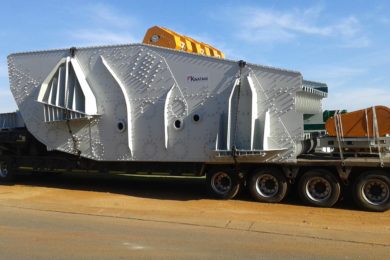Kwatani says it has helped a South Africa diamond operation double the feed rate of its degrit screen through the use of one of its customised solutions.
The customer was operating several multi-slope screens to dewater product between 0.8 mm and 5 mm in size, before it was treated by dense medium separation (DMS). However, the screens were causing a severe carry-over of water onto the conveyor belt to the DMS, according to the South Africa-based OEM.
“The feed rate on each screen was being limited to about 250 t/h,” Kwatani CEO, Kim Schoepflin, said. “We tackled this by designing and manufacturing a customised multi-slope screening machine to fit the customer’s existing footprint.”
Schoepflin said Kwatani’s replacement was able to double the feed rate to about 500 t/h, with minimal water carry-over.
As a result of the success of this unit, the customer requested Kwatani to replace the whole bank of screens, it said.
In another contract, a customer asked for assistance with underperforming screens that could not deliver the original design parameters. They also wanted to increase the tonnage throughput by 17%, according to the company.
“We conducted a careful evaluation in collaboration with the customer, and came up with an innovative and economical solution,” Schoepflin said. “Simply replacing the existing screens with Kwatani’s new larger screens would have been costly and time consuming, so we decided instead to replace the screen’s existing gearboxes.”
The replacement gearboxes delivered greater vibration, but without exceeding the output torque the existing motors driving the gearboxes could provide.
“Drawing from our portfolio of locally designed and manufactured exciter gearboxes, we were able to implement this solution very quickly,” she said. “The two new exciter gearboxes were delivered to site and were in operation within two weeks – successfully and immediately increasing the screen’s throughput.”
The benefits to the customer did not stop there, according to Schoepflin. The newly optimised operating parameters meant the material bed depth was lower, so the drive motors drew a lower amperage and reduced the cost of power consumed.
“Our customised screening and feeding solutions – developed by our in-house team of experienced mechanical engineers and metallurgists – are based on consultation with each customer,” she explained. “The result is a design that delivers the optimal processing performance and tonnage at the lowest cost of ownership.”










